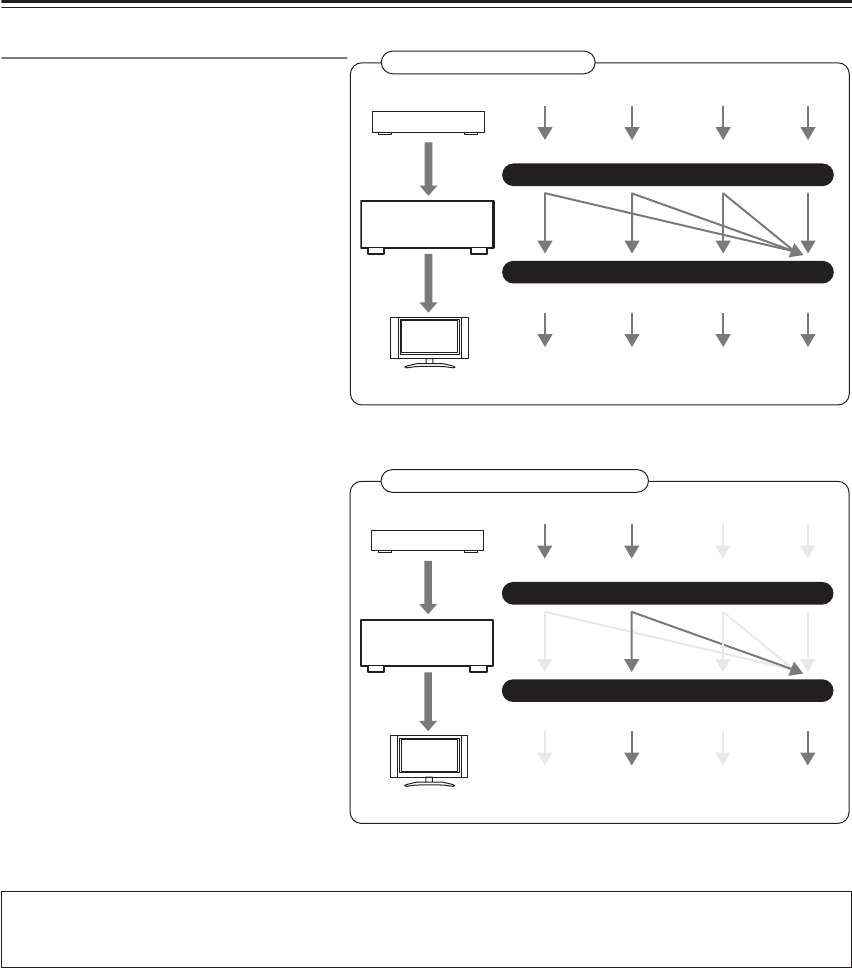
22
Connecting Your Components
—Continued
Video Connection Formats
Video equipment can be connected to the AV
receiver by using any one of the following
video connection formats: composite video,
S-Video, component video, or HDMI, the lat-
ter offering the best picture quality.
Video input signals flow through the AV
receiver as shown, with composite video, S-
Video, and component video sources all being
upconverted for the HDMI output.
The composite video, S-Video, and component
video outputs pass through their respective
input signals as they are.
When you connect audio equipment to an
HDMI or COMPONENT input, you must
assign that input to an input selector (see pages
43 and 44).
If signals are present at more than one input,
the inputs will be selected automatically in the
following order of priority: HDMI, component
video, S-Video, composite video. However, for
component video only, regardless of whether a
component video signal is actually present, if a
component video input is assigned to the input
selector, that component video input will be
selected. And if no component video input is
assigned to the input selector, this will be inter-
preted as no component video signal being
present.
In the Signal Selection Example shown on the
right, video signals are present at both the
S-Video and composite video inputs, however,
the S-Video signal is automatically selected as
the source and video is output by the S-Video
and HDMI outputs.
The onscreen setup menus appear only on a TV that is connected to the HDMI OUT. If your TV is connected to the
composite video or S-Video MONITOR OUT, or the COMPONENT VIDEO OUT, use the TX-SR606’s display when
changing settings.
IN
MONITOR OUT
DVD player, etc.
AV receiver
TV, projector, etc.
Composite S-Video Component
Video Signal Flow Chart
HDMI
Composite S-Video Component
HDMI
IN
MONITOR OUT
DVD player, etc.
AV receiver
TV, projector, etc.
Composite S-Video Component
Signal Selection Example
HDMI
Composite S-Video Component
HDMI


















